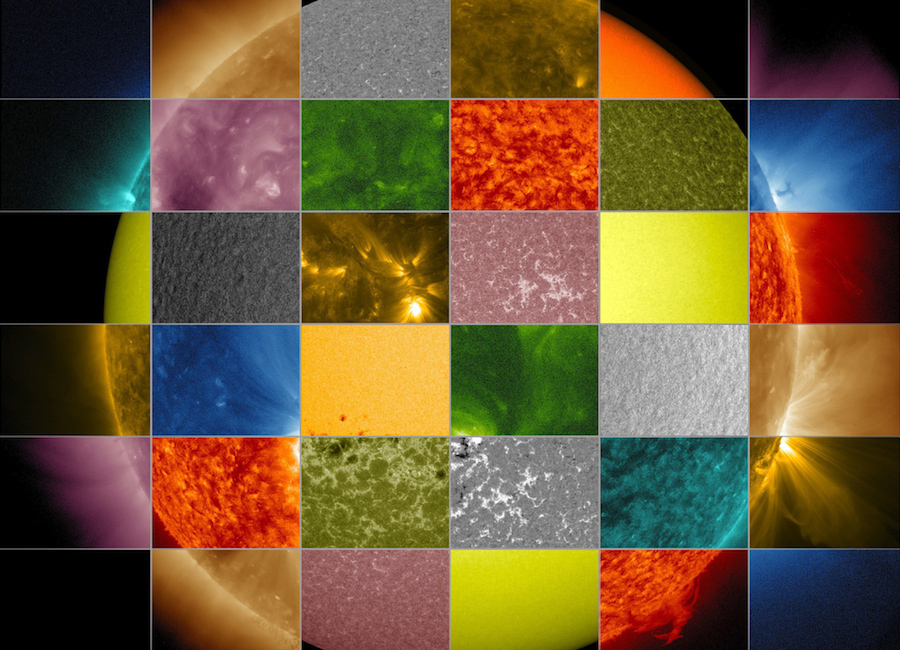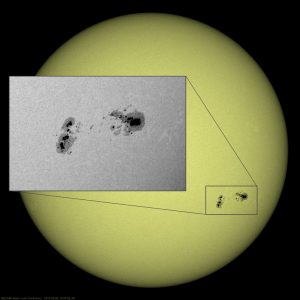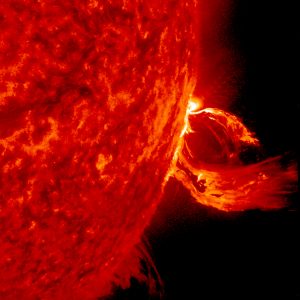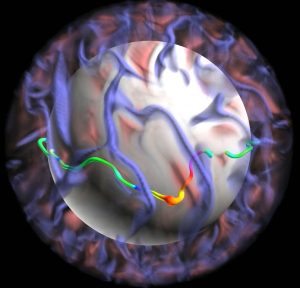The Secret Life of the Sun

The Sun looks pretty boring, right? It’s just a glowing ball in the sky that doesn’t appear to do anything particularly remarkable. But, I’m here to tell you that there’s more to the Sun than meets the naked eye.
The Sun emits light in many different wavelengths. Specialized telescopes can observe the Sun in multiple wavelengths of light, including those not visible with our eyes. This helps scientists to learn about the different processes that occur on the Sun’s surface and in various layers of its atmosphere.
Tangled Magnetic Fields

Observing the Sun in ultraviolet wavelengths reveals giant arches of hot gas extended above the Sun’s surface. These arches trace out loops of extreme magnetic fields that can reach distances up to 10 times the Earth’s diameter above the Sun. On the Sun’s surface, at the base of these arches, are dark Earth-sized regions of intense magnetism called sunspots.
Why should we care about the Sun’s (usually invisible to our eyes) magnetic fields? Frequently, regions of solar magnetism release an enormous amount of stored magnetic energy. Often referred to as solar storms, these explosions accelerate a tangled cloud of magnetic fields and hot gases away from the Sun with an energy equivalent to millions of simultaneous hydrogen bomb detonations. Solar storms can expose astronauts to high levels of radiation, damage communication satellites, and produce electrical surges in our power grid. But, solar storms also produce the aurora–the northern and southern lights.

The Sun’s Magnetic Furnace
The Sun creates all of its magnetic fields from scratch through a process called a dynamo. The Sun’s dynamo converts the energy from the motion of the hot gas in its interior into magnetic fields. To study how the Sun and other stars create their magnetism, I use a branch of physics called magnetohydrodynamics. Using supercomputers, and pencil and paper, I combine the equations of electricity and magnetism and the motion of fluids to understand the Sun’s magnetic furnace. We still do not have a complete theory to describe and predict the Sun’s magnetic behavior, which has an impact on our habitability and technological world. My work is just one important piece of this puzzle.

See it for yourself!
The Sun has a secret magnetic life. This magnetism is created deep in its interior well beyond the reach of telescopes. But, this magnetism reveals itself on and above its surface if we observe it in wavelengths of light hidden from our eyes.
At the Adler Planetarium in our Space Visualization Laboratory, you can see 3D videos of the Sun’s magnetic fields taken from new telescope observations and cutting-edge computer simulations. On cloud-free mornings, you can also catch a glimpse of the Sun’s surface through portable telescopes at the Adler Planetarium or in our Doane Observatory. Maybe you’ll find a sunspot or two. While you’re at it, stop by our historical book collection to see some of Galileo’s first drawings of sunspots. You can also help solar and stellar physicists with their research as a citizen scientist. Join the Zooniverse projects Solar Stormwatch or Protect Our Planet From Solar Storms to help track solar storms through space, or the Variable Star Zoo project to help classify observed brightness variations in stars, occasionally caused by stellar magnetism.






